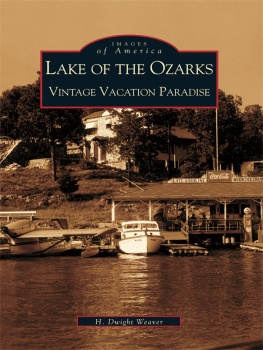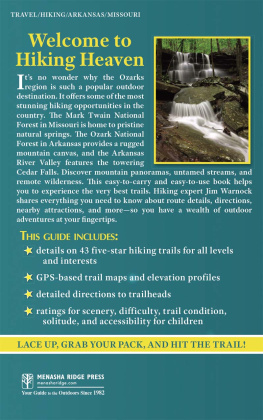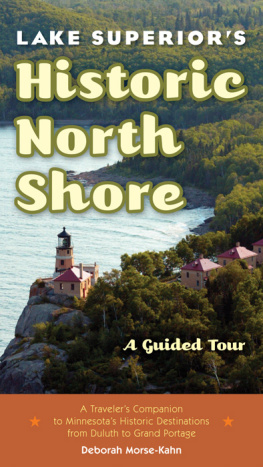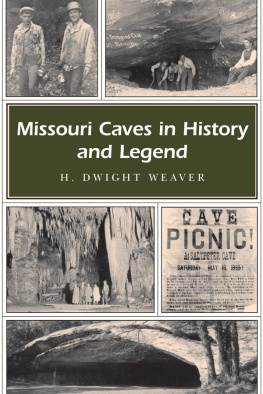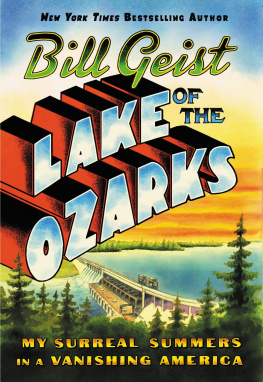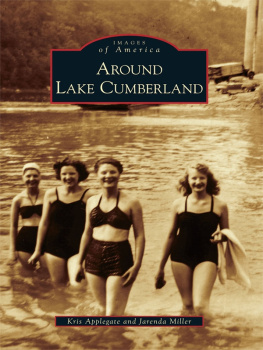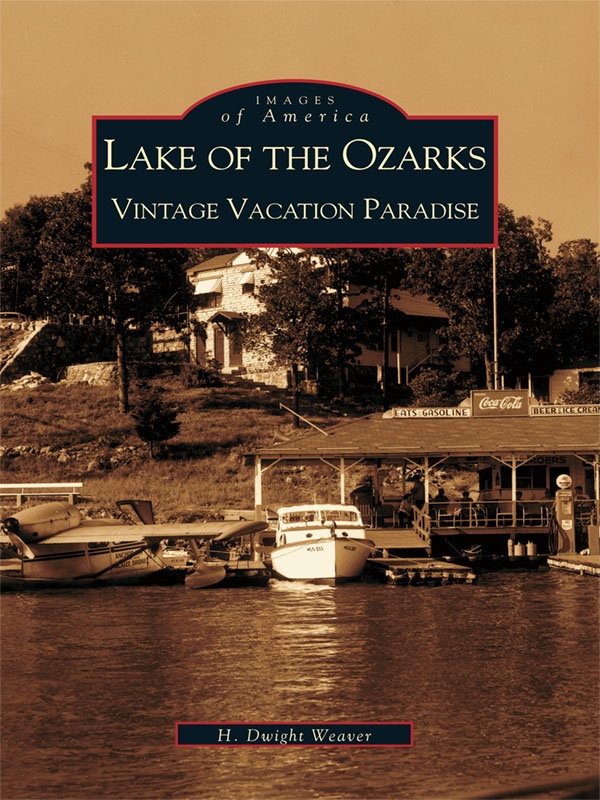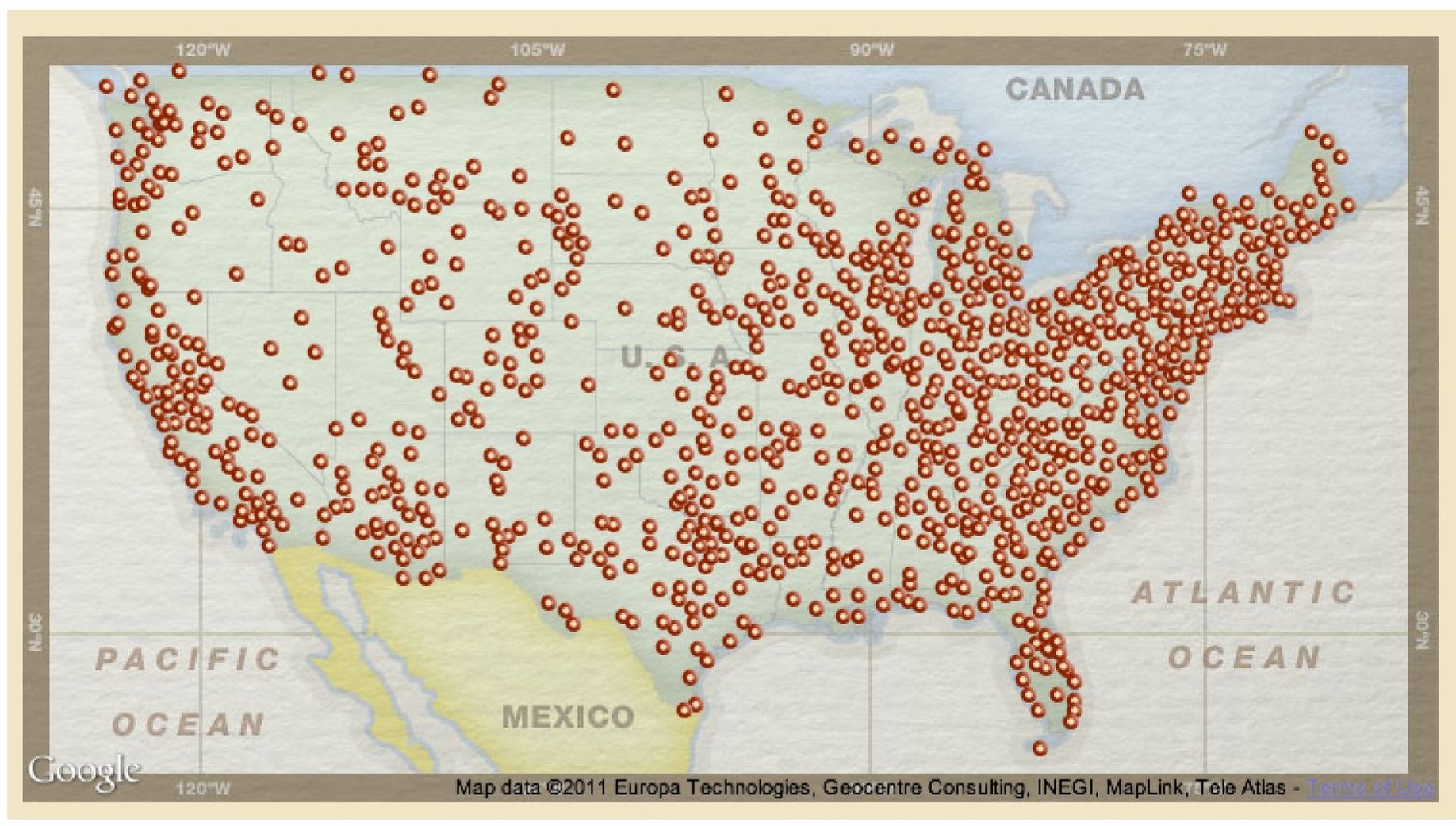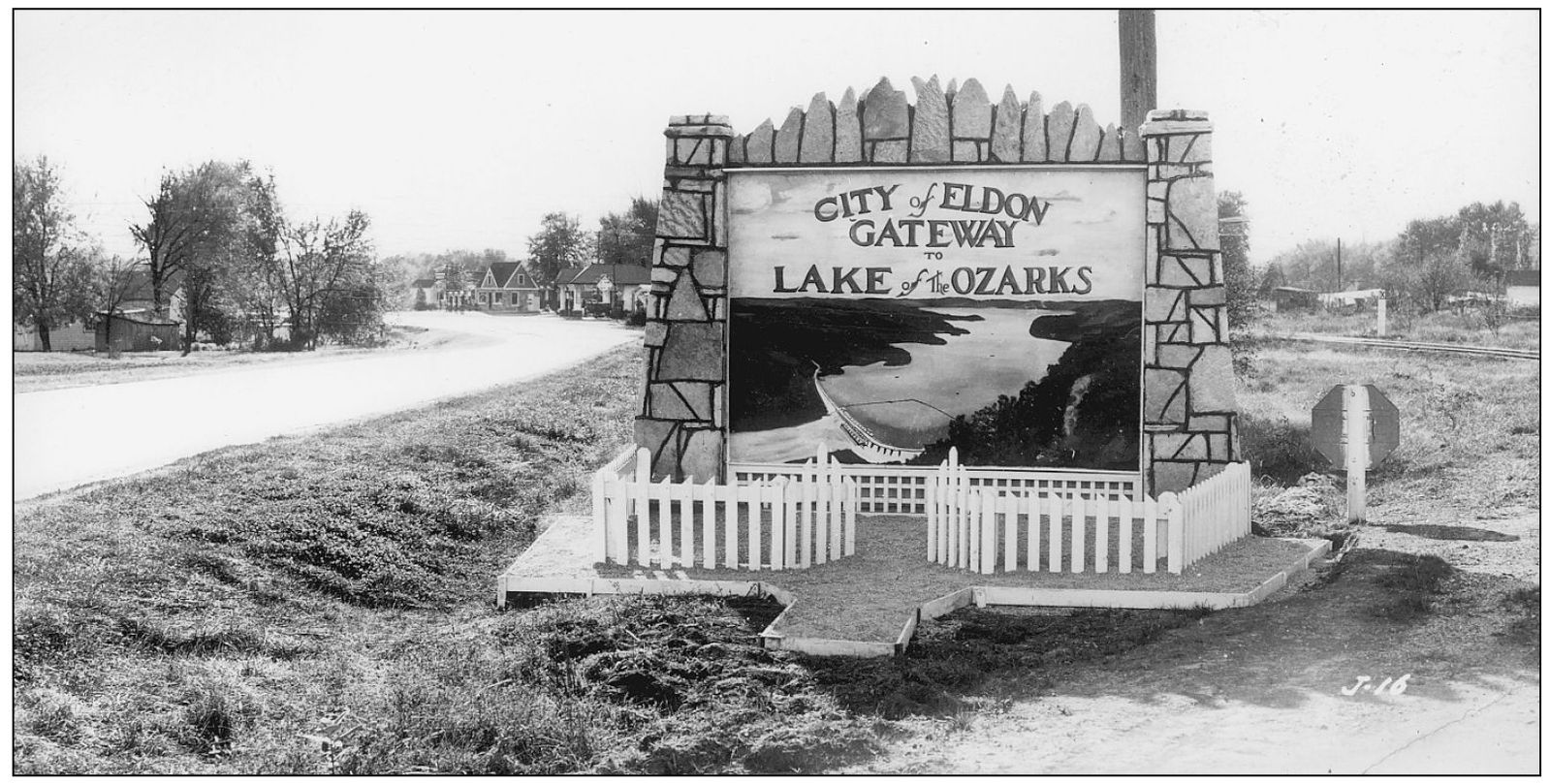ACKNOWLEDGMENTS
Lake of the Ozarks: Vintage Vacation Paradise is a book with content that stretches for 91 miles up the Osage River, extending from Bagnell Dam to Warsaw, and along the way the pages of this book pass through a number of towns. The author is deeply indebted to the people who generously extended him the courtesy of their time and information and the use of their historic images.
Early postcards and promotional literature also aided in the creation of this book. Early recreational guides and maps produced by the Lake of the Ozarks Association, Bagnell Dam Chamber of Commerce, Hurricane Deck Association, Camdenton Chamber of Commerce, Osage Beach Chamber of Commerce, Niangua Arms Association, and the Headwaters Association were especially helpful. Helpful too were postcards, brochures, and programs produced by the Ozark Opry, J Bar H Rodeo, Country Music Hall, Austins Nashville Opry, Ozark Deer Farm, Max Allens Zoological Gardens, Toms Monkey Jungle, Indian Burial Cave, Ozark Caverns, Bridal Cave, Jacobs Cave, Les Gotcher Collection, and Western Fun.
The author wishes to extend a special thank you to the following people: Danny Lane of Oak Grove; John Bradbury of Rolla; Bruce F. James of Lake Ozark; James E. Lawrence of Eldon; Sylvia Brinkman of Eldon; Victoria Hubble of Osage Beach; Diane Warner of Osage Beach; and Lloyd Slone of Eldon.
A thank you is extended to the City of Osage Beach for permitting me to use freely from their collection of historic images assembled by Victoria Hubble when she was preparing the history of that community for the book The Town of Two Rivers .
Without the generous cooperation of Dan Jarvis, Osage Plant Manager at Bagnell Dam, and Allen Sullivan, Superintendent of Maintenance at Bagnell Dam, and access to the Bagnell Dam archives, this book would have been seriously lacking in some important images. AmerenUE and its employees are always kind when someone comes looking for help in writing about the Lake of the Ozarks and their role in its creation and development.
I am also indebted to the Missouri State Archives and their knowledgeable staff and extensive collection of early day images; to the Miller County Historical Society; and to the Camden County Historical Society. They have encouraged and continue to support my efforts to research and write about the early history of the Lake of the Ozarks region.
I also want to thank Samantha Gleisten of Arcadia whose support, encouragement, and ideas guided me toward revisions of the original manuscript that greatly improved this book.
And last, but not least, I want to offer my thanks and gratitude to the many people of the Lake of the Ozarks region and throughout the Midwest who have told me personally how much they enjoy my books about the history of the lake area, and who have urged me to keep writing because they want to learn more about the early days at the Lake of the Ozarks.
BIBLIOGRAPHY
Benton County Enterprise newspaper, Warsaw. Various early issues.
Burke, Lorraine. 50th Anniversary Bagnell Dam 19311981 . Lake of the Ozarks Area Council of the Arts, 1981.
Daily Capitol News newspaper, Jefferson City. Various early issues.
Eldon Advertiser newspaper, Eldon. Various early issues.
Flader, Susan. Exploring Missouris Legacy, State Parks and Historic Sites . University of Missouri Press, 1992.
Gallaher, Jno. A. Preliminary Report on the Structural and Economic Geology of Missouri , Jefferson City, MO: Bureau of Geology and Mines, 1900.
Harpham, Lucille Keller. Camden County History .
Hubbell, Victoria. A Town On Two Rivers, A History of Osage Beach, Missouri . City of Osage Beach, 1998.
Jefferies, T. Victor. Before the Dam Water . 1989.
Lake of the Ozarks News newspaper, Lake Ozark. Various early issues.
Miller County Autogram newspaper, Tuscumbia. Various early issues.
Missouris Lake of the Ozarks (map and guide). Lake of the Ozarks Assocation. Various editions from 1935 to 1980.
Missouri, The WPA Guide to the Show Me State . St. Louis, MO: Missouri Historical Society Press, 1998.
Moreland, Fern. A History of Camdenton . Camden County Historian. Camden County Historical Society, 1977.
Moulder, Nelle. Early Days In Linn Creek . Camden County Historian. Camden County Historical Society, 1969.
Ross, John H. Annual Report of the State Game and Fish Commissioner , Jefferson City, MO, 1932.
Raynor, Tina. Eldon, Missouri, A Look Back, 1882-1982 . Eldon Centennial, Inc.
Strange, Gaylord. Dam Site, Missouri. Osage River Country, A History of the People and the Places of Miller County , Missouri . Jefferson City, MO: Ketchs Printing, 1995.
The History of Ha Ha Tonka . Camden County Historian. Camden County Historical Society, 198587.
The Reveille newspaper, Camdenton. Various early issues.
Union Electric Magazine . Union Electric Light and Power Company.
Vacation in the Heart of the Ozarks . Lake of the Ozarks Association, 1939.
Versailles Leader newspaper, Versailles. Various early issues.
White, Mahlon N. They Call It Truman Dam , 1975.
Find more books like this at www.imagesofamerica.com
Search for your hometown history, your old stomping grounds, and even your favorite sports team.
One
ELDON, AURORA SPRINGS, AND EL RANCHO JUNCTION
In 1931, Eldon, 12 miles north of Bagnell Dam, began promoting itself as the northern gateway to Lake of the Ozarks on U.S. Hwy. 54. Iowa and Illinois are large markets for the lake. Most people who came to the lake from these two states in the early years came by way of Hwy. 54.
The town of Eldon is a wide awake town, said a 1940 promotional map. Here you will find all the conveniences of the city, yet, the quiet of the country, good hotels and camps, service stations, stores, garages...and the...headquarters for the Ozark Information and Service Bureau.
By the 1960s, Eldon boasted of having two railroads, two bus lines, various agricultural and industrial enterprises, nine motels, eleven restaurants, and a string of roadside attractions and nightclubs along Hwy. 54 south of town. It also had the first Model Air Park ever built in a small community.
Tourism was very much a family phenomenon in the 1950s and 60s. The farmers of Iowa and Illinois found Eldon attractive because it was so much like the towns from which they came. On weekends, the motels filled up. But in the 1970s, major highway construction bypassed Eldon, which had a serious impact upon tourist-oriented businesses. Today, the railroads and roadside attractions are gone, but the town is growing and still very much a part of the lakes economic fabric. The modern pursuit of antiques and collectibles has overtaken the community and brought to town a whole new kind of tourism industry.
Expecting a welcome influx of tourists to their town, in 1931 the Eldon Chamber of Commerce erected this gateway sign along U.S. Bus. Hwy. 54 just north of town. The quaint rock structure still stands, but the wording has changed and the mural is gone. To the left, in the distance, are two gas stations. They still exist, one abandoned, the other with new facilities. Today, the Capitol Regional Medical Center is located directly behind the sign.

